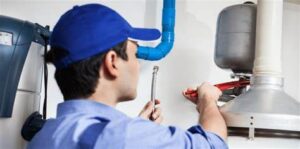5 Tips To Repair Water Heater In San Diego
A malfunctioning water heater can be a major inconvenience in any household, especially during the cold winter months. Thankfully, many common water heater issues can be repaired without the need for expensive professional help. In this article, we will provide you with five valuable tips to help you repair your water heater and keep the hot water flowing in your home.
Check the Power Source
Before attempting any repairs on your water heater, it’s essential to ensure your safety by turning off the power supply to the unit. If you have an electric water heater, locate the circuit breaker labeled for the heater and switch it off. For gas water heaters, turn off the gas supply by turning the gas control valve to the “off” position. This step will prevent accidents and injuries while you work on your water heater.
Inspect the Pressure Relief Valve
A common issue with water heaters is excess pressure buildup. This can lead to leaks or even an explosion if not addressed promptly. The pressure relief valve is a crucial safety feature that releases excess pressure from the tank. Check for any signs of leakage or corrosion around the valve. If you notice any issues, replace the valve following the manufacturer’s instructions.
Flush the Tank
Over time, sediment buildup can occur inside the water heater tank, reducing its efficiency and causing problems. To address this, you can flush the tank. Start by turning off the water heater and the cold water supply valve leading to it. Attach a hose to the drain valve at the bottom of the tank and place the other end in a drain or outside. Open the drain valve and let the water flow out, flushing out the sediment. Repeat this process until the water runs clear, and then close the drain valve and turn the water supply back on.
Replace Faulty Heating Elements
For electric water heaters, heating elements are responsible for heating the water. If you’re experiencing no hot water or lukewarm water, a faulty heating element could be the culprit. First, turn off the power and drain the tank as previously described. Then, locate the heating elements, typically found behind access panels. Use a multimeter to test for continuity. If one of the elements doesn’t show continuity, it’s time to replace it. Follow the manufacturer’s instructions to install a new one.
Insulate the Pipes and Tank
Insulating your water heater and hot water pipes can help improve energy efficiency and reduce heat loss. This is especially important in colder climates, as it can prevent your water heater from working harder to maintain a consistent temperature. You can find insulation kits for both the tank and pipes at most hardware stores. Installing these insulation materials is a simple DIY project that can lead to significant energy savings over time.
FAQs
How Do I Know If My Water Heater Needs Repair Or Replacement?
If your water heater is constantly failing, has a significant leak, or is more than 10-15 years old, it’s usually more cost-effective to replace it rather than repair it. However, minor issues like a faulty pressure relief valve or heating element can often be fixed.
Can I Repair A Gas Water Heater Myself?
Gas water heaters involve working with potentially dangerous gas lines. It’s strongly recommended to leave any repairs involving gas components to a licensed professional to ensure safety and compliance with local codes.
What Should I Do If I Smell Gas Near My Water Heater?
If you smell gas near your water heater, immediately turn off the gas supply, open windows to ventilate the area, and leave the premises. Do not use any open flames or electrical devices. Contact your gas utility company and a professional plumber to address the issue.
Please call Frasers Plumbing at (619) 332-0275 for any and all of your plumbing needs.
Conclusion
Give Fraser Plumbing Inc. a call right away to learn more about how our experts can help with leak detection in San Diego, CA.

